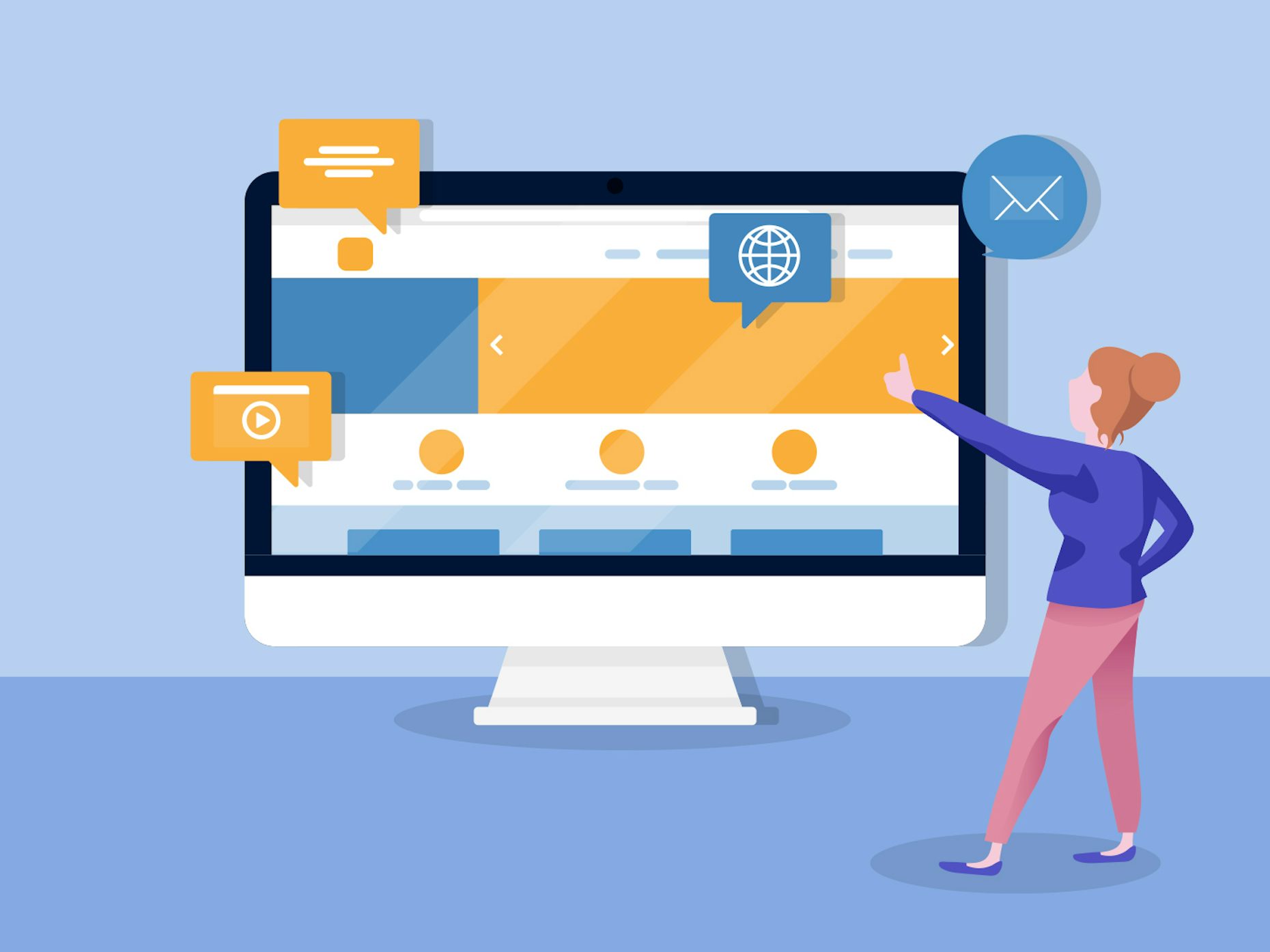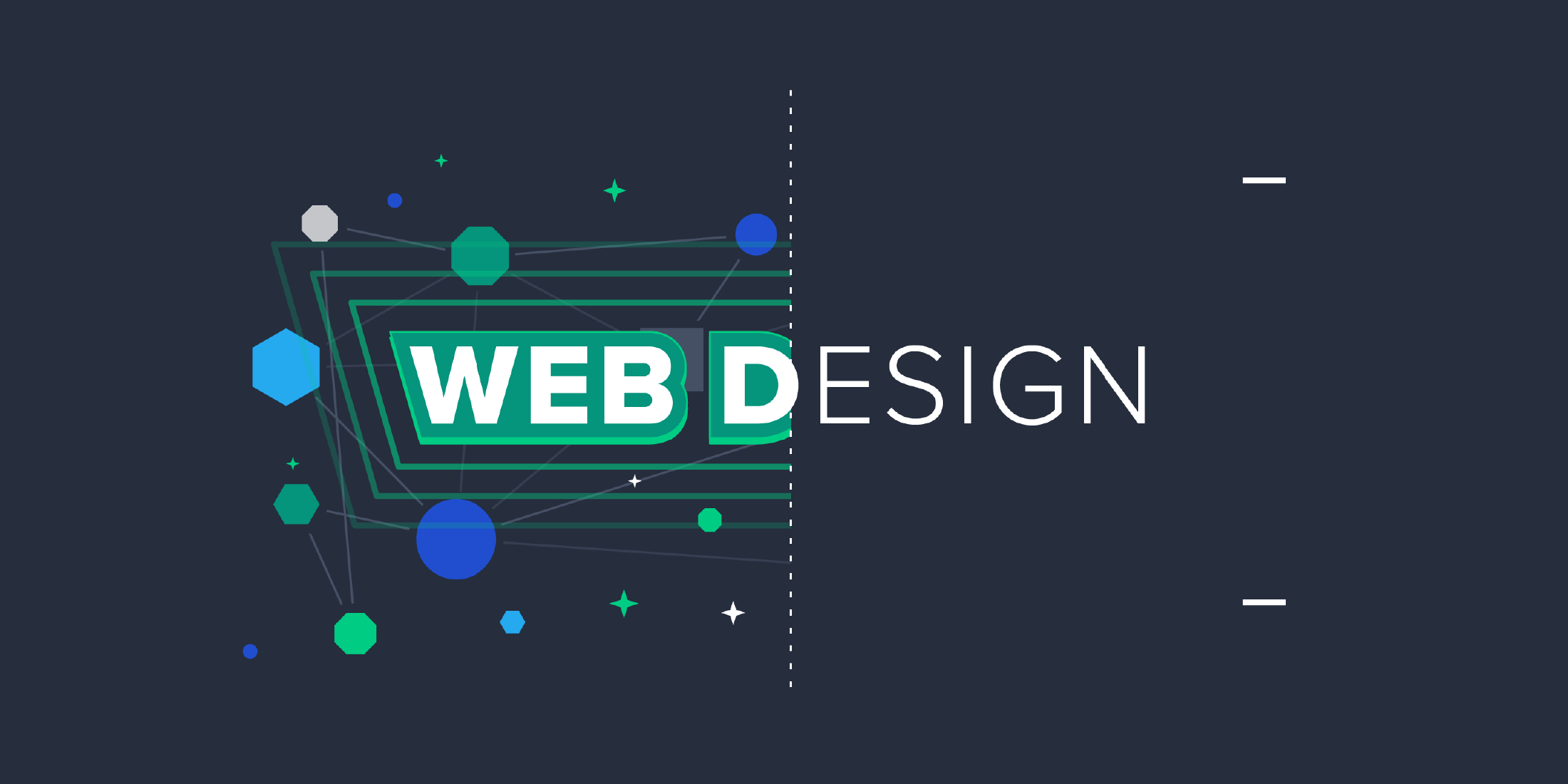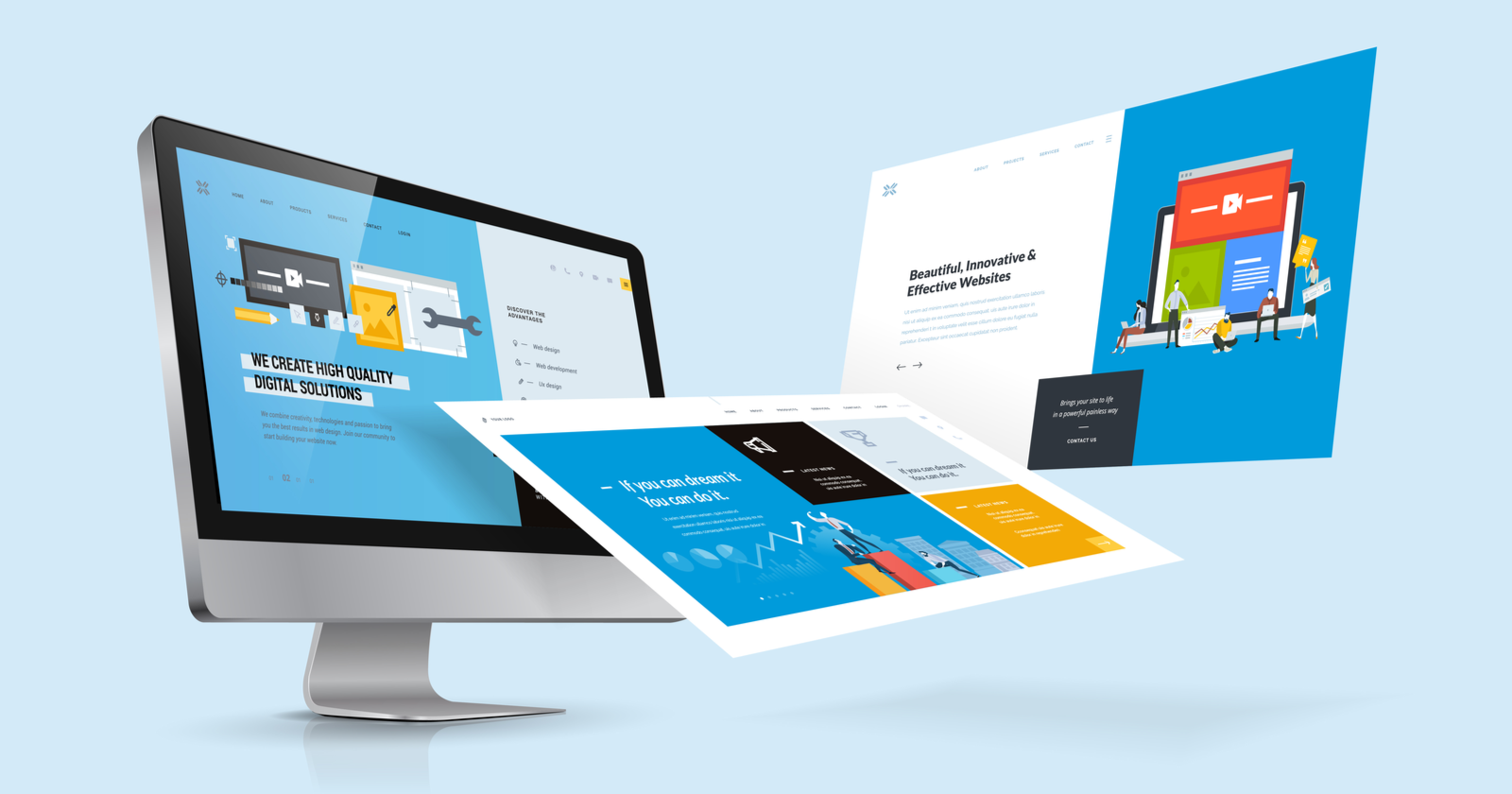All Categories
Featured
Table of Contents
- – Custom Website Design And Marketing - Inmotion...
- – Wicky Design: Philadelphia Web Design Tips an...
- – Web Design - Linkedin Learning, Formerly Lynd...
- – Modern Website Designs - Best Web Page Design...
- – Learning Web Design: A Beginner's Guide To Ht...
- – Webpage Design (Article) - Further Learning -...
- – Web Design Services - Verizon Small Business...
- – Awwwards - Website Awards - Best Web Design ...
- – Beginner's Guide: How To Learn Web Design At...
- – Indianapolis Web Design And Digital Marketin...
- – Top Web Design Agencies Ranked - 2022 Review...
Custom Website Design And Marketing - Inmotion Hosting Tips and Tricks:
Quick summary Functionality and the utility, not the visual design, determine the success or failure of a website. Given that the visitor of the page is the only person who clicks the mouse and therefore chooses everything, user-centric design has developed as a standard technique for successful and profit-oriented web design - web design frederick md.
and the utility, not the visual style, figure out the success or failure of a website. Because the visitor of the page is the only individual who clicks the mouse and therefore chooses everything, user-centric style has ended up being a basic method for successful and profit-oriented web design. After all, if users can't use a feature, it may also not exist.
g. where the search box ought to be placed) as it has already been performed in a variety of posts; instead we focus on the approaches which, used effectively, can lead to more sophisticated design decisions and streamline the procedure of viewing presented information. Please discover that you may be interested in the usability-related articles we have actually released before: Concepts Of Good Website Style And Reliable Web Design Standards, In order to use the concepts properly we first require to comprehend how users communicate with sites, how they believe and what are the fundamental patterns of users' habits.
Wicky Design: Philadelphia Web Design Tips and Tricks:
Visitors glance at each brand-new page, scan some of the text, and click on the first link that captures their interest or vaguely looks like the important things they're searching for. There are big parts of the page they don't even look at. A lot of users browse for something intriguing (or useful) and clickable; as quickly as some promising candidates are found, users click.
If a page supplies users with top quality content, they are willing to compromise the material with advertisements and the style of the website. This is the reason that not-that-well-designed websites with top quality material get a great deal of traffic over years. Material is more vital than the style which supports it.

Users do not check out, they scan. Notice how "hot" locations abrupt in the middle of sentences. This is typical for the scanning process. Really easy concept: If a site isn't able to satisfy users' expectations, then designer failed to get his task done appropriately and the business loses cash. The higher is the cognitive load and the less user-friendly is the navigation, the more prepared are users to leave the website and look for options.
Web Design - Linkedin Learning, Formerly Lynda.com Tips and Tricks:
Neither do they scan web page in a linear fashion, going sequentially from one site section to another one. Rather users satisfice; they choose the first affordable alternative. As quickly as they discover a link that looks like it might result in the objective, there is an excellent opportunity that it will be instantly clicked.
It doesn't matter to us if we understand how things work, as long as we can use them. If your audience is going to act like you're creating signboard, then design terrific signboards." Users desire to have the ability to control their internet browser and rely on the consistent data presentation throughout the website.
If the navigation and site architecture aren't instinctive, the variety of enigma grows and makes it harder for users to comprehend how the system works and how to obtain from point A to point B. A clear structure, moderate visual hints and quickly identifiable links can assist users to discover their course to their aim.
Modern Website Designs - Best Web Page Designers Tips and Tricks:

claims to be "beyond channels, beyond items, beyond circulation". What does it indicate? Because users tend to explore sites according to the "F"-pattern, these 3 statements would be the very first components users will see on the page once it is filled. The style itself is simple and instinctive, to understand what the page is about the user requires to browse for the answer.
As soon as you have actually accomplished this, you can interact why the system is helpful and how users can take advantage of it. Individuals will not utilize your web website if they can't discover their way around it. 2. Don't Waste Users' Perseverance, In every project when you are going to use your visitors some service or tool, attempt to keep your user requirements minimal.
Novice visitors want to, not filling long web types for an account they may never ever use in the future. Let users check out the site and find your services without forcing them into sharing private information. It's not reasonable to require users to enter an e-mail address to evaluate the function.
Learning Web Design: A Beginner's Guide To Html, Css ... Tips and Tricks:
And that's what you desire your users to feel on your web website. The registration can be done in less than 30 seconds as the kind has horizontal orientation, the user does not even require to scroll the page.
A user registration alone is enough of an obstacle to user navigation to minimize incoming traffic. 3. Manage To Focus Users' Attention, As websites offer both static and dynamic material, some aspects of the interface bring in attention more than others do. Certainly, images are more attractive than the text simply as the sentences marked as vibrant are more attractive than plain text.
Focusing users' attention to specific locations of the site with a moderate use of visual aspects can assist your visitors to obtain from point A to point B without thinking of how it in fact is expected to be done. The less enigma visitors have, the they have and the more trust they can establish towards the company the site represents.
Webpage Design (Article) - Further Learning - Khan Academy Tips and Tricks:
4. Pursue Feature Direct exposure, Modern web designs are typically criticized due to their method of guiding users with aesthetically appealing 1-2-3-done-steps, big buttons with visual results and so on. From the design viewpoint these components really aren't a bad thing. On the contrary, such as they lead the visitors through the website content in an extremely basic and user-friendly way.
The website has 9 main navigation choices which are visible at the first glance. The choice of colors may be too light, though. is a basic principle of successful interface design. It doesn't truly matter how this is achieved. What matters is that the material is well-understood and visitors feel comfortable with the way they connect with the system.
com gets straight to the point. No cute words, no exaggerated statements. Rather a cost: simply what visitors are searching for. An optimum service for reliable writing is touse short and succinct phrases (come to the point as quickly as possible), usage scannable layout (categorize the content, use several heading levels, use visual elements and bulleted lists which break the flow of consistent text blocks), usage plain and objective language (a promo does not need to seem like ad; give your users some reasonable and objective factor why they need to use your service or remain on your website)6.
Web Design Services - Verizon Small Business Essentials Tips and Tricks:
Users are rarely on a website to enjoy the style; moreover, in many cases they are trying to find the info despite the design - web design frederick md. Pursue simplicity rather of intricacy. From the visitors' point of view, the very best website design is a pure text, with no advertisements or more content blocks matching precisely the question visitors used or the material they have actually been looking for.
Finch clearly presents the details about the site and provides visitors an option of options without overcrowding them with unneeded content. 7. Don't Be Scared Of The White Area, Really it's really difficult to overestimate the significance of white area. Not only does it help to for the visitors, but it makes it possible to view the info provided on the screen.
Complex structures are more difficult to read, scan, examine and work with. If you have the choice in between separating 2 style sectors by a noticeable line or by some whitespace, it's generally much better to utilize the whitespace option. (Simon's Law): the better you manage to provide users with a sense of visual hierarchy, the simpler your content will be to perceive.
Awwwards - Website Awards - Best Web Design Trends Tips and Tricks:
The exact same conventions and guidelines should be applied to all elements.: do the most with the least amount of hints and visual components. Four significant points to be considered: simpleness, clearness, diversity, and emphasis. Simplicity includes only the elements that are essential for interaction. Clearness: all components need to be created so their significance is not unclear.
Conventions Are Our Friends, Standard style of site elements doesn't result in a boring web website. As they minimize the finding out curve, the need to figure out how things work. For example, it would be an usability headache if all websites had various visual presentation of RSS-feeds. That's not that various from our regular life where we tend to get utilized to standard principles of how we arrange data (folders) or do shopping (placement of products).
understand what they're anticipating from a site navigation, text structure, search placement etc. A normal example from usability sessions is to equate the page in Japanese (assuming your web users don't understand Japanese, e. g. with Babelfish) and supply your use testers with a task to discover something in the page of various language.
Beginner's Guide: How To Learn Web Design At Home - Medium Tips and Tricks:
Test Early, Test Frequently, This so-called TETO-principle ought to be applied to every web design project as usability tests often supply into substantial issues and issues related to a provided design. Test not too late, not too little and not for the wrong reasons.
Some essential points to keep in mind: according to Steve Krug, and testing one user early in the task is better than screening 50 near the end. Accoring to Boehm's very first law, mistakes are most regular during requirements and design activities and are the more pricey the later they are gotten rid of.
That means that you design something, test it, fix it and after that check it once again. There may be problems which haven't been discovered throughout the preliminary as users were almost obstructed by other problems. use tests. Either you'll be pointed to the issues you have or you'll be pointed to the absence of significant design defects which is in both cases a helpful insight for your project.
Indianapolis Web Design And Digital Marketing Agency Tips and Tricks:

This holds for designers too. After you've dealt with a site for couple of weeks, you can't observe it from a fresh perspective any longer. You know how it is developed and for that reason you understand precisely how it works you have the knowledge independent testers and visitors of your website wouldn't have.
It can be connected to other locations such as graphic style, user experience, and multimedia arts, however is more appropriately seen from a technological perspective. It has ended up being a big part of individuals's daily lives. It is tough to envision the Internet without animated graphics, different styles of typography, background, videos and music.

During 1991 to 1993 the World Wide Web was born. Text-only pages could be viewed using an easy line-mode web browser. In 1993 Marc Andreessen and Eric Bina, created the Mosaic web browser. At the time there were multiple browsers, nevertheless most of them were Unix-based and naturally text heavy. There had actually been no integrated method to graphic design elements such as images or noises.
Top Web Design Agencies Ranked - 2022 Reviews - Clutch.co Tips and Tricks:
The W3C was produced in October 1994 to "lead the World Wide Web to its full potential by establishing typical procedures that promote its development and ensure its interoperability." This discouraged any one company from monopolizing a propriety web browser and programming language, which could have changed the impact of the World Wide Web as a whole.
As this has actually happened the innovation of the web has likewise carried on. There have also been considerable changes in the way people use and access the web, and this has altered how websites are created. Considering that completion of the browsers wars [] brand-new web browsers have actually been released. A number of these are open source implying that they tend to have faster development and are more encouraging of new standards.
Learn more about Lovell Media Group LLC or TrainACETable of Contents
- – Custom Website Design And Marketing - Inmotion...
- – Wicky Design: Philadelphia Web Design Tips an...
- – Web Design - Linkedin Learning, Formerly Lynd...
- – Modern Website Designs - Best Web Page Design...
- – Learning Web Design: A Beginner's Guide To Ht...
- – Webpage Design (Article) - Further Learning -...
- – Web Design Services - Verizon Small Business...
- – Awwwards - Website Awards - Best Web Design ...
- – Beginner's Guide: How To Learn Web Design At...
- – Indianapolis Web Design And Digital Marketin...
- – Top Web Design Agencies Ranked - 2022 Review...
Latest Posts
Website Creators Frederick MD
Webpage Design (Article) - Further Learning - Khan Academy Tips and Tricks:
Lifted Logic: Web Design In Kansas City - Seo - Website ... Tips and Tricks:
More
Latest Posts
Website Creators Frederick MD
Webpage Design (Article) - Further Learning - Khan Academy Tips and Tricks:
Lifted Logic: Web Design In Kansas City - Seo - Website ... Tips and Tricks: